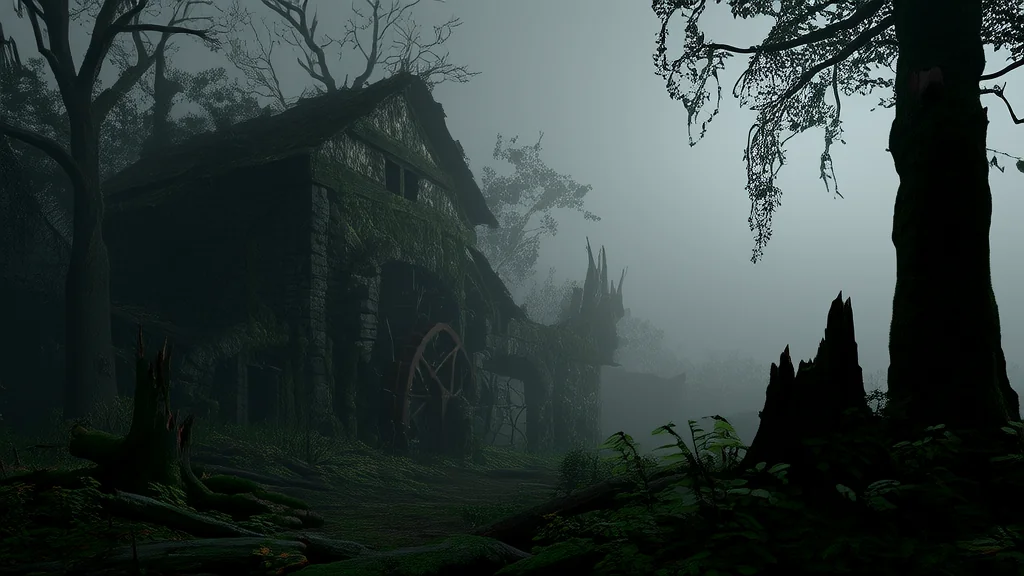🔮 Weird Tales & Urban Legends
Whispers in the Moss: The Secret Symbols of Eldergrove's Forgotten Mill

The town of Eldergrove had always been quiet, nestled in the shadow of an ancient forest that whispered secrets to those who dared to listen. It was a place where time moved slower, and the air carried a faint scent of moss and forgotten memories. Most people came to visit the old stone church at the edge of the village, but few ever stayed long enough to notice the symbols carved into the walls of the abandoned mill by the river.
Eleanor had come to Eldergrove to escape the noise of the city. She rented a small cottage on the outskirts, where the silence was thick and the wind often carried strange echoes. One evening, as she walked along the riverbank, she noticed something unusual—patterns etched into the stones beneath the water. They shimmered faintly, as if they were alive, and when she knelt to examine them, the surface of the water rippled without any breeze.
She returned the next day with a notebook and a flashlight. The symbols were more visible now, glowing softly in the dim light. They looked like a language, but not one she recognized. Some resembled spirals, others jagged lines, and a few formed shapes that seemed to shift when she wasn’t looking directly at them. She took photographs and sketched them in her notebook, trying to make sense of their meaning.
Days passed, and Eleanor became obsessed. She spent hours by the river, sometimes alone, sometimes with the local historian, Mr. Hargrove, who had lived in Eldergrove for decades. He warned her not to get too close to the symbols. “They don’t belong to this world,” he said, his voice low and cautious. “They’ve been there longer than the town itself.”
But Eleanor couldn’t stop. She began to dream of the symbols—of voices speaking in a language she almost understood. In her dreams, the river flowed upward, and the stones whispered stories of a time before time. She woke up with her hands covered in damp earth, her fingers stained with ink from her sketches.
One night, she found a new symbol. It was deeper than the rest, carved with precision and care. It looked like a spiral with a single line cutting through its center. When she touched it, the ground trembled, and the river’s current changed direction. A cold wind swept through the trees, carrying with it a sound like distant laughter.
The next morning, she discovered that all the other symbols had vanished. Only the new one remained, glowing faintly under the morning sun. She tried to erase it, but her fingers left no mark. It was as if the symbol had become part of the stone itself.
Mr. Hargrove appeared at her door that afternoon, his face pale. “You shouldn’t have done that,” he said. “That symbol is a key. It opens something that should stay closed.”
“What is it?” she asked, but he only shook his head.
That night, the dreams returned, stronger than before. She saw a figure standing at the edge of the river, its face obscured by mist. It reached out, and the symbols on the stone pulsed in response. She felt a pull, a force that called to her from somewhere deep within the earth.
When she woke, the symbol was gone. But in its place, a new pattern had appeared—one that looked like a map, though it led nowhere she could recognize. The air in her cottage felt heavier, as if the walls themselves were holding their breath.
Eleanor packed her things and left Eldergrove the next morning, but as she stepped onto the road, she glanced back one last time. The mill stood silent, the river still. And in the distance, she thought she heard the whisper of the symbols, not in words, but in something deeper—an invitation, or perhaps a warning.
She never spoke of what she found. But sometimes, in the quiet moments of the night, she would wake with the feeling that she was being watched, not by anything human, but by something ancient and waiting. Something that had always been there, just beyond the reach of understanding.
And she wondered—had she truly left Eldergrove, or had the symbols followed her home?
Published on en
🔗
Related Sites
- AI Blog — AI trends and tech news